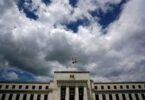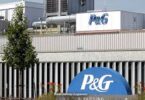F.P. Report
ISLAMABAD: The Non- Performing Loans to gross advances (infection) ratio has moved down to 9.2 by end of September 2017 from 9.3 percent at the end June 2017, showing improvements in asset quality, official data revealed.
With cash recoveries outweighing fresh NPLs, seasonal reversals of agricultural NPLs and upgrade of some classified loans, the stock of NPLs decreased by Rs3.0 billion to reach Rs611.8 billion during Q3CY17, according to the Quarterly Performance Review of the Banking Sector by State Bank of Pakistan for the quarter ended on September 30, 2017.
According to the report, the aging of NPLs shows that most of the current level of the NPL corresponds to the period of build-up witnessed in Calendar year 2009 to 2012. The decline in NPLs to Loans ratio was the lowest since Q4 of Calendar Year 2008, the report revealed.
With improvement in provisions coverage (Provisions to NPLs) ratio to 85.3 percent compared to 83.7 percent in the last quarter, net NPLs to net-loans ratio has also decreased to 1.5 percent in Q3CY17 which was 2.1 percent in Q3CY16.
The easy monetary policy stance, as manifested in lower weighted average lending rates (WALR), has led to improvement in the repayment capacity of the borrowers, the report said adding that there was a downward trend in both the number of non-performing borrowers and quantum of fresh NPLs.
The overall performance of the banking sector, both on Quarter-on-Quarter and Year-on-year basis, has remained quite satisfactory during Q3CY17, the report revealed adding that the assets of the banking sector have inched up by 0.3 percent during Q3CY17 as compared to a decline of 1.6 percent during Q3CY16.
The increase in asset base is primarily attributed to an increase of 1.8 percent in investments (net); while advances (net) have seen a moderate decline of 0.4 percent (2.5 percent decline in Q3CY16). The reduction in advances is seasonal in nature. On YoY basis, however, there is a robust growth in net-advances (20.6 percent). This growth, among others things, was attributed to 51.5 percent increase in financing by Islamic banking institutions (34% share in YoY advances flow). Investments have also increased (12.8 percent) resulting in expansion of 16.0 percent in the asset base of the banking sector.
Meanwhile, the report said that despite the seasonal net retirements in commodity financing and sugar sector, the overall gross advances (domestic) to private sector have declined marginally; significantly lesser than the established 3rd quarter financing dip. Advances demand from textile and other sectors (agriculture, automobiles, electronics etc.) have been promising, it added.
It noticed that the share of fixed investment (long-term) advances in overall advances was persistently rising while the banks have continued to invest in short term MTBs while investment in PIBs and Sukuk have declined.
The deposit mobilization has remained on track, primarily, on the back of growth in saving and fixed deposits.






